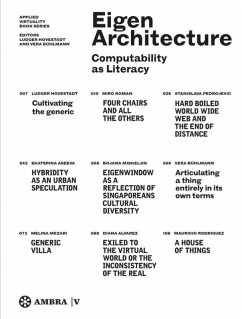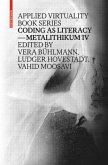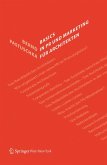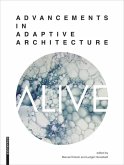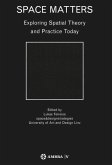This book shifts the frame of reference for today’s network- and structure oriented discussions from the applied computational tools of the 20th century back to the abstractness of 19th century mathematics. It re-reads George Boole, Richard Dedekind, Hermann Grassmann and Bernhard Riemann in a surprising manner. EigenArchitecture argues for a literacy of the digital, displacing the role of geometrical craftsmanship. Thus, architecture can be liberated from today’s economical, technocratic and bureaucratic straight jackets: from physicalistic optimization, sociological balancing, and ideological naturalizations. The book comprises a programmatic text on the role of technology in architecture, a philosophical text on the generic and on algebraic articulation, and six exemplary projects by postgraduate students in 2012 at the Chair for Computer Aided Architectural Design at ETH Zurich, Switzerland.
Dieses Buch verschiebt den Bezugsrahmen der Netzwerk- und strukturorientierten Diskussionen von den angewandten Technologien des 20. Jahrhunderts zurück zur Abstraktheit der Mathematik des 19. Jahrhunderts. Es liest George Boole, Richard Dedekind, Hermann Grassmann und Bernhard Riemann auf überraschende Art und Weise neu. EigenArchitecture argumentiert in Richtung einer Kompetenz des Digitalen. Sie kann die Kunstfertigkeit im Geometrischen ablösen. So kann sich die Architektur von den heutigen ökonomischen, technokratischen und bürokratischen Zwangsjacken befreien: von den physikalistischen Optimierungen, den soziologischen Balancierungen und den ideologischen Naturalisierungen. Das Buch enthält einen programmatischen Text über die Rolle der Technologie in der Architektur, einen philosophischen Text über das Generische und das algebraische Artikulieren, und sechs Beispiele von postgraduierten Studenten des Jahres 2012 an der Professur für CAAD an der ETH Zürich, Schweiz.
Dieses Buch verschiebt den Bezugsrahmen der Netzwerk- und strukturorientierten Diskussionen von den angewandten Technologien des 20. Jahrhunderts zurück zur Abstraktheit der Mathematik des 19. Jahrhunderts. Es liest George Boole, Richard Dedekind, Hermann Grassmann und Bernhard Riemann auf überraschende Art und Weise neu. EigenArchitecture argumentiert in Richtung einer Kompetenz des Digitalen. Sie kann die Kunstfertigkeit im Geometrischen ablösen. So kann sich die Architektur von den heutigen ökonomischen, technokratischen und bürokratischen Zwangsjacken befreien: von den physikalistischen Optimierungen, den soziologischen Balancierungen und den ideologischen Naturalisierungen. Das Buch enthält einen programmatischen Text über die Rolle der Technologie in der Architektur, einen philosophischen Text über das Generische und das algebraische Artikulieren, und sechs Beispiele von postgraduierten Studenten des Jahres 2012 an der Professur für CAAD an der ETH Zürich, Schweiz.

